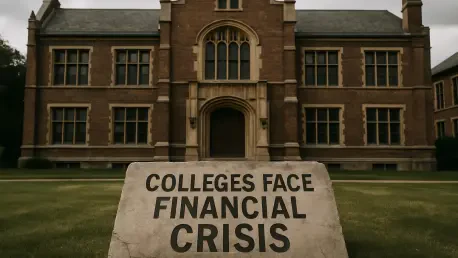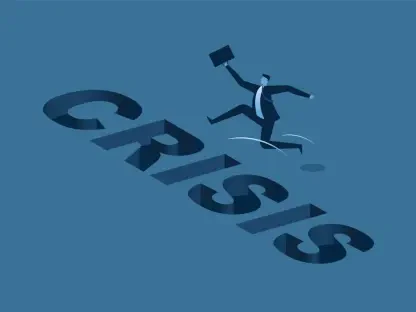Higher education in the United States stands at a critical juncture as federal policy changes under the Trump administration unleash a wave of financial and operational challenges for colleges and universities across the nation, threatening access for students and the broader mission of education. With sweeping funding cuts, intensified scrutiny of prestigious institutions, and a reorientation of federal priorities, the stability of many schools hangs in the balance. This article delves into the specific policies driving these pressures, examines their impact on diverse institutions, and highlights emerging responses that signal both struggle and resilience within the sector. From graduate programs to K-12 initiatives, the ripple effects of these shifts are reshaping the landscape in profound ways, raising urgent questions about the future of higher education.
Federal Funding Cuts and Their Impact
Graduate Programs and Minority-Serving Institutions at Risk
The abrupt termination of Grad PLUS loans, a critical lifeline for graduate students covering the full cost of attendance, has sent shockwaves through higher education institutions reliant on these programs for revenue. This policy change risks rendering master’s, doctoral, and professional degrees unaffordable for a significant number of students, potentially leading to sharp declines in enrollment. Universities that depend heavily on graduate tuition are now forced to reevaluate budgets, with some considering program cuts or increased tuition for remaining students. The broader implication is a possible reduction in the nation’s capacity to produce advanced-degree holders, which could hinder innovation and economic growth over time. As institutions grapple with this loss, the immediate focus remains on finding alternative funding sources or financial aid models to mitigate the impact on both students and campus finances, though solutions remain elusive amid ongoing federal uncertainty.
Equally troubling is the severe hit to minority-serving institutions, particularly Hispanic-serving colleges in Texas, which are set to lose approximately $60 million in federal grants due to discontinued support from the Education Department. These funds have historically supported vital resources such as academic counseling, scholarships, and outreach programs for underserved communities, making their absence a direct blow to educational equity. The loss threatens to widen achievement gaps, as many students at these institutions rely on such support to navigate higher education. Administrators are now faced with tough choices, from scaling back services to seeking private donations, though these alternatives often fall short of replacing federal backing. This policy shift underscores a broader trend of reduced investment in programs aimed at leveling the playing field, leaving vulnerable populations with fewer pathways to success.
K-12 Program Cuts and Equity Concerns
The cancellation of nearly $170 million in GEAR UP grants for over 200 public K-12 schools marks another alarming development in the realm of federal education policy. These grants funded essential college preparation resources, including counselors, tutoring, and mentorship programs, which played a pivotal role in helping students from disadvantaged backgrounds envision and achieve higher education. With this support stripped away, many schools now lack the means to guide students through the complex process of college applications and financial aid, potentially lowering application rates and long-term enrollment. The decision, rooted in objections to diversity, equity, and inclusion initiatives, has sparked criticism for prioritizing ideological goals over tangible student outcomes. The fallout is likely to be felt most acutely by low-income and minority students, whose access to opportunity is further constrained.
Critics of these cuts argue that they reflect a troubling misalignment between federal priorities and the fundamental needs of the education system. The elimination of GEAR UP funding not only jeopardizes individual student futures but also undermines the pipeline that feeds into higher education institutions. Colleges and universities may see a delayed impact as fewer prepared students enter the applicant pool, compounding existing enrollment challenges. Meanwhile, educators and advocacy groups are sounding the alarm about the erosion of equity-focused programs, warning that such policies could entrench systemic disparities for generations. Efforts to restore funding through legislative or legal channels are underway, but the immediate void left by these cuts continues to pose a significant barrier to educational access and societal progress.
Targeted Oversight of Elite Universities
Harvard and Brown Under Pressure
Elite institutions like Harvard University are finding themselves in the crosshairs of federal scrutiny, facing unprecedented operational and financial strain as a result of targeted policy actions. Under a civil rights investigation by the U.S. Department of Education, Harvard has been given a strict 20-day ultimatum to provide undergraduate admissions documents, with the threat of losing federal student aid looming if it fails to comply. Compounding this pressure, the university has been placed on Heightened Cash Monitoring status, a designation typically reserved for schools in dire financial straits. This requires Harvard to disburse federal aid from its own funds before seeking reimbursement, creating significant cash flow challenges. Such measures signal a deliberate effort to tighten control over prominent institutions, raising concerns about how far-reaching these oversight tactics might become across the sector.
Brown University in Rhode Island, meanwhile, is taking proactive steps to brace for anticipated reductions in federal research funding from agencies like the National Science Foundation. In a preemptive move, the university has laid off 48 employees and eliminated 55 vacant positions, aiming to streamline costs in the face of an uncertain fiscal future. These cuts, while necessary from a budgetary standpoint, risk diminishing the university’s research capacity and academic offerings, which are central to its mission and reputation. The ripple effects extend beyond campus, as reduced research output could slow advancements in critical fields. Brown’s actions reflect a broader anxiety among elite schools about sustaining their operations under heightened federal pressure, with many now reevaluating long-term strategies to adapt to a landscape of shrinking support and increased accountability.
Broader Implications for Higher Education
The intense focus on institutions like Harvard and Brown may set a precedent for how federal oversight evolves across the higher education spectrum. If such punitive measures become normalized, smaller or less-resourced colleges could face even greater challenges in meeting compliance demands or absorbing financial penalties. The designation of Heightened Cash Monitoring, for instance, could strain budgets at schools without the endowments or fundraising capabilities of Ivy League universities, potentially pushing some toward closure. This trend of targeted scrutiny also risks creating a chilling effect, where institutions self-censor or alter programs to avoid federal ire, compromising academic freedom. The long-term impact on the sector’s diversity of thought and innovation remains a pressing concern as these policies unfold.
Moreover, the financial pressures on elite universities highlight a paradox within federal policy: while these schools often have significant resources, their symbolic role makes them prime targets for demonstrating policy shifts. The resulting budget cuts and layoffs at places like Brown could lead to reduced opportunities for students and faculty alike, even at institutions perceived as insulated from financial woes. As federal actions reshape the expectations placed on higher education, there is growing unease about whether the sector can maintain its dual role as a driver of research and a gateway to opportunity. The experiences of Harvard and Brown serve as a cautionary tale, prompting other universities to prepare for similar challenges while advocating for policies that balance accountability with support.
Signs of Resistance and Adaptation
Legal Victories and Operational Progress
Amid the barrage of financial setbacks, a glimmer of hope emerged for the University of California, Los Angeles (UCLA), where a federal judge ordered the National Institutes of Health to reinstate approximately $500 million in research grants that had been abruptly canceled. This ruling, which suggests the terminations may have been unlawful, represents a significant victory for institutions willing to challenge federal decisions through legal avenues. For UCLA, the reinstated funding preserves critical research initiatives that benefit both the academic community and society at large. However, this success also underscores the uneven nature of resistance—only institutions with the resources to pursue lengthy legal battles can afford such strategies. The broader sector watches closely, hoping this precedent might deter future arbitrary cuts, though the outcome’s scalability remains uncertain.
On the operational front, the U.S. Department of Education achieved a notable milestone by successfully processing around 24,000 Free Application for Federal Student Aid (FAFSA) forms without rejection during a beta-testing phase for the 2026-27 cycle. This progress, ahead of a congressional deadline, signals an improvement in the efficiency of federal aid distribution, a process often criticized for delays and errors. While this development offers a small reprieve for students and administrators navigating aid applications, it does little to address the overarching financial crises plaguing colleges. The successful testing is a step toward modernization, yet the scale of funding cuts and policy shifts overshadows such incremental gains. Institutions continue to seek systemic solutions, recognizing that operational fixes alone cannot counteract the broader trend of reduced federal support.
Innovation and Caution in Technology Use
As financial pressures mount, some institutions are exploring technological innovations to streamline operations, though with measured caution. At a recent conference hosted by the National Association for College Admission Counseling, experts highlighted the potential and pitfalls of using artificial intelligence (AI) in admissions processes. A poignant analogy likened AI to a rotisserie, warning that it cannot be set and forgotten without risking disastrous outcomes. This perspective emphasizes the necessity of constant oversight to prevent errors or biases in automated systems. While AI could reduce administrative burdens, especially in underfunded admissions offices, the risk of over-reliance remains a critical concern. Colleges are thus navigating a delicate balance, adopting tools to enhance efficiency while ensuring human judgment remains central to decision-making.
Looking ahead, the cautious integration of technology reflects a broader adaptive spirit within higher education, even as federal policies create headwinds. Beyond AI, some schools are exploring digital platforms for fundraising or virtual learning to offset revenue losses, though these initiatives require upfront investment and long-term planning. The sector’s ability to innovate under constraint is commendable, yet it also highlights the disparity between institutions with resources to experiment and those struggling to survive. As policy challenges persist, the push for technological and operational adaptation must be paired with advocacy for restored funding. Only through a multifaceted approach can higher education hope to weather this storm, preserving its mission of fostering knowledge and opportunity for all.








